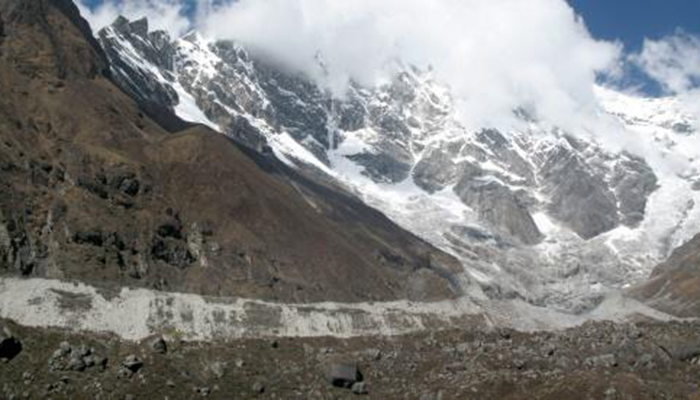Bleak outlook for Asian glaciers: climate study
The Asian high mountains, the new study says, were already warming more rapidly than the global average
September 13, 2017

PARIS: Asia´s mountain glaciers will lose at least a third of their mass through global warming by century´s end, with dire consequences for millions of people who rely on them for fresh water, researchers said Wednesday.
This is a best-case scenario, based on the assumption that the world manages to limit average global warming to 1.5 degrees Celsius (2.7 degrees Fahrenheit) over pre-industrial levels, a team wrote in the journal Nature.
"To meet the 1.5 C target will be a task of unprecedented difficulty," the researchers said, "and even then, 36 percent (give or take seven percent) of the ice mass in the high mountains of Asia is projected to be lost" by 2100.
With warming of 3.5 C, 4.0 C and 6.0 C respectively, Asian glacier losses could amount to 49 percent, 51 percent or 65 percent by the end of the century, according to the team´s modelling study.
The high mountains of Asia (HMA) comprise a geographical region surrounding the Tibetan plateau, holding the biggest store of frozen water outside the poles.
It feeds many of the world´s great rivers, including the Ganges, the Indus and the Brahmaputra, on which hundreds of millions of people depend.
Nearly 200 nations adopted the Paris Agreement in 2015, which sets the goal of limiting warming to a level "well below" 2.0 C, while "pursuing efforts" to achieve a lower ceiling of 1.5 C.
Earth´s surface has already warmed by about 1.0 C, according to scientists.
For high warming scenarios, experts predict land-gobbling sea-level rise, worsening storms, more frequent droughts and floods, species loss, and disease spread.
The Asian high mountains, the new study said, were already warming more rapidly than the global average.
A global temperature rise of 1.5 C would mean an average increase in the region of about 2.1 C, with differences between mountain ranges -- all of which will warm by more than 1.5 C.
The Hindu Kush mountain range would warm by about 2.3 C and the eastern Himalayas by some 1.9 C, the study forecast.
"Even if temperatures stabilise at their current level, (glacier) mass loss will continue for decades to come," the researchers added.
For the high mountain glaciers to survive, "it is essential to minimise the global temperature increase."
Swathes of South Asia and China depend on meltwater from Himalayan glaciers for drinking water, electricity generation and irrigation.
At the same time, the regions are also vulnerable to more intense flooding from accelerated glacier melt, combined with heavier rains and superstorms boosted by global warming.
A study in July in the journal Nature Climate Change, said there was only a five-percent chance of holding global warming under 2.0 C.
For 1.5 C, the odds were about one percent.
On current trends, some experts project Earth is on track to warm by about 3.0 C.
Glaciologists have sounded the alarm about shrinking ice cover in other mountain regions.
A 2014 study found that Peru´s glaciers had shrunk by more than 40 percent since 1970.
According to the LGGE glaciology laboratory in the French city of Grenoble, the glaciers of the French Alps lost about a quarter of their surface area between 2003 and 2015.
The glaciers, they said, melted three times faster during those 12 years than in the period 1986-2003.



